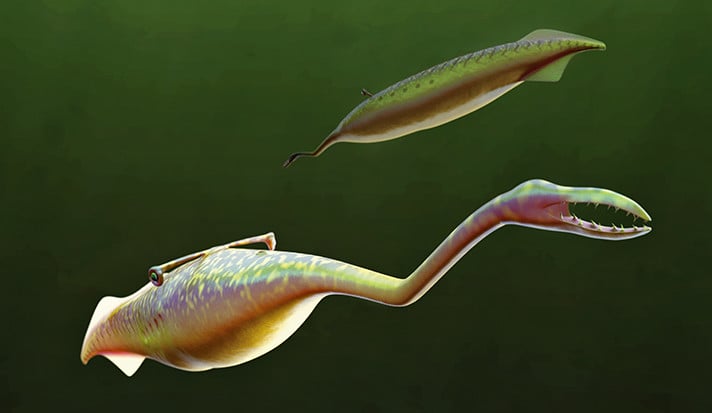Experts continue to find more indescribable animal fossils as time pass. Paleontologists were shocked that the now identified Tully Monster was not a worm, as they initially thought, but a soft-bodied vertebrate.
The Tully monster, which has remained a mystery for numerous decades, has finally been identified as an ancient vertebrate that lives in bodies of water and happens to be found in only one fossil site in the world.
The Alien-like Tully Monster
The Tullimonstrum gregarium, or the Tully monster, is a water-dwelling vertebrate from more than 300 million years ago, living in tropical areas in the Pennsylvanian period. The only fossils of the Tully monster are only currently seen in the Mazon Creek, near Morris, in Illinois, United States. Many experts had debated on what the Tully monster was before its proper identification. (Source: Mindat)
The initial ideas of paleontologists that Tully monsters were worms surprised them further when they’ve learned that the mysterious and alien-like animal was a type of vertebrate. For numerous decades, experts assumed that the Tully monster was an ancient form of a worm, anthropod, or mollusk – basically, an invertebrate animal. Studies revealed that Tully monsters were one of the ancient lamprey’s cousins. Lampreys are ancient vertebrates, commonly known as jawless fish. They’re one of the first animals known to develop a backbone. (Source: National Geographic)
What led to the controversy regarding the Tully monster’s classification is its odd appearance. They are strange-looking creatures with weird physical structures one might describe as similar to aliens. The Tully monster’s mouth extends to a long and narrow protrusion with its soft-bodied surface, almost looking like gripping claws. Additionally, its eyes extend outward into thin stems. (Source: The Conversation)
Moreover, earlier descriptions of the Tully were wrong. What scientists thought to be a light-colored digestive tract band was surprisingly a notochord, a tube that surrounded the spinal cords of ancient vertebrates.
Once paleontologists compared the eccentric-looking Tully monster to its cousin, the lamprey, its features finally made sense. Now that experts have overcome the task of identifying its physical structure, they now face the tough task of determining how it survived through eating, swimming, and navigating. (Source: National Geographic)
The Tullimonstrum Controversy
In 1995, Francis Tully found an odd-looking fossil in one of the fossil beds in Mazon Creek, Illinois. Scientists working in the field museums shared Tully’s feelings of perplexion. Other experts recall that they’ve never seen anything quite similar to the Tully monster, and thus they were unable to categorize it properly.
None of the books had it, I’ve never seen it in museums or at rock clubs, so I brought it to Chicago to the field museum to see if they could figure out what the devil it was.
Francis Tully
Following the passing of Francis Tully, Mary Carman and other researchers working in the Illinois State Geological Survey took the liberty of asking state representatives to make the Tully monster an official symbol of Illinois. Undeterred by the controversy, they succeeded in 1989 when the Tully monster became an official state fossil. (Source: National Geographic)
